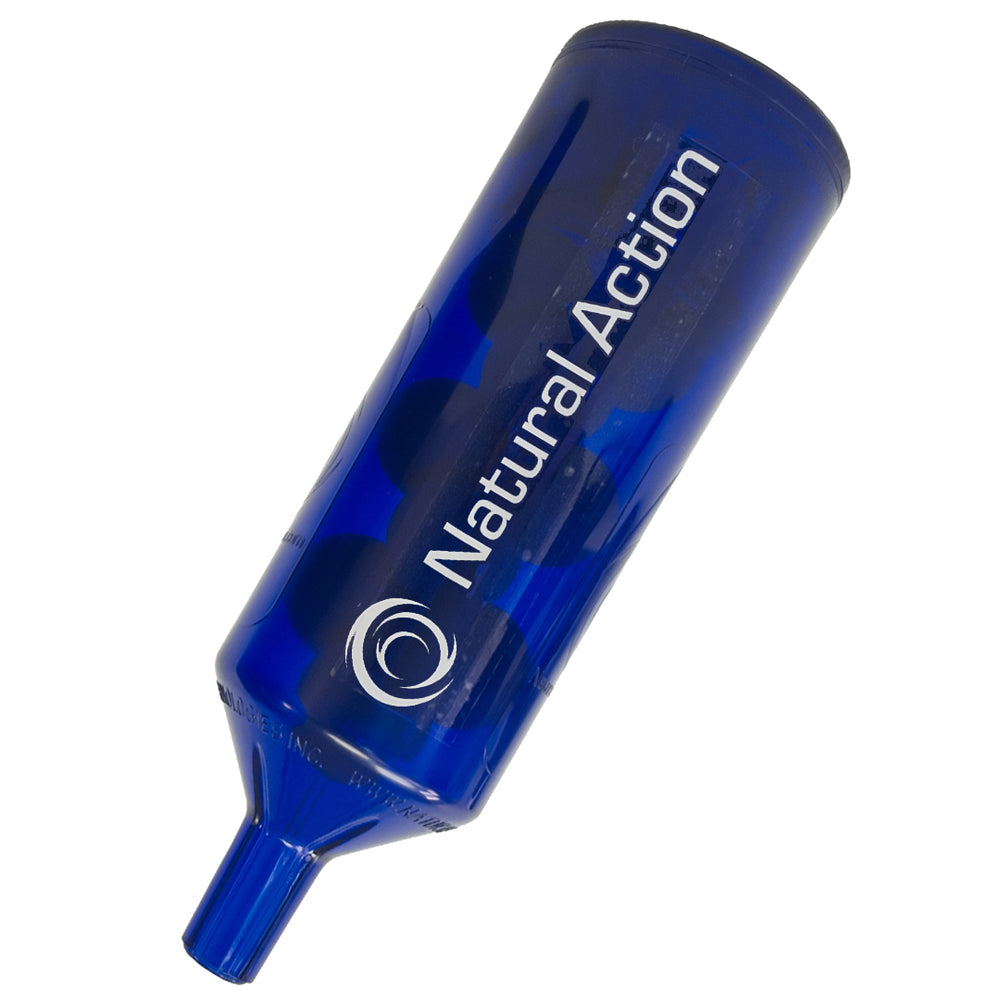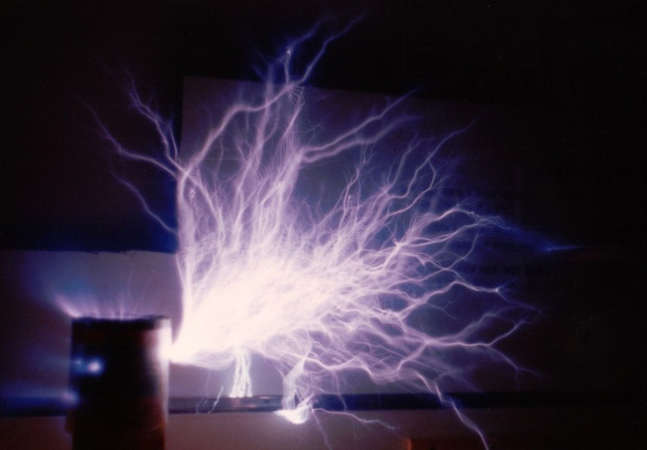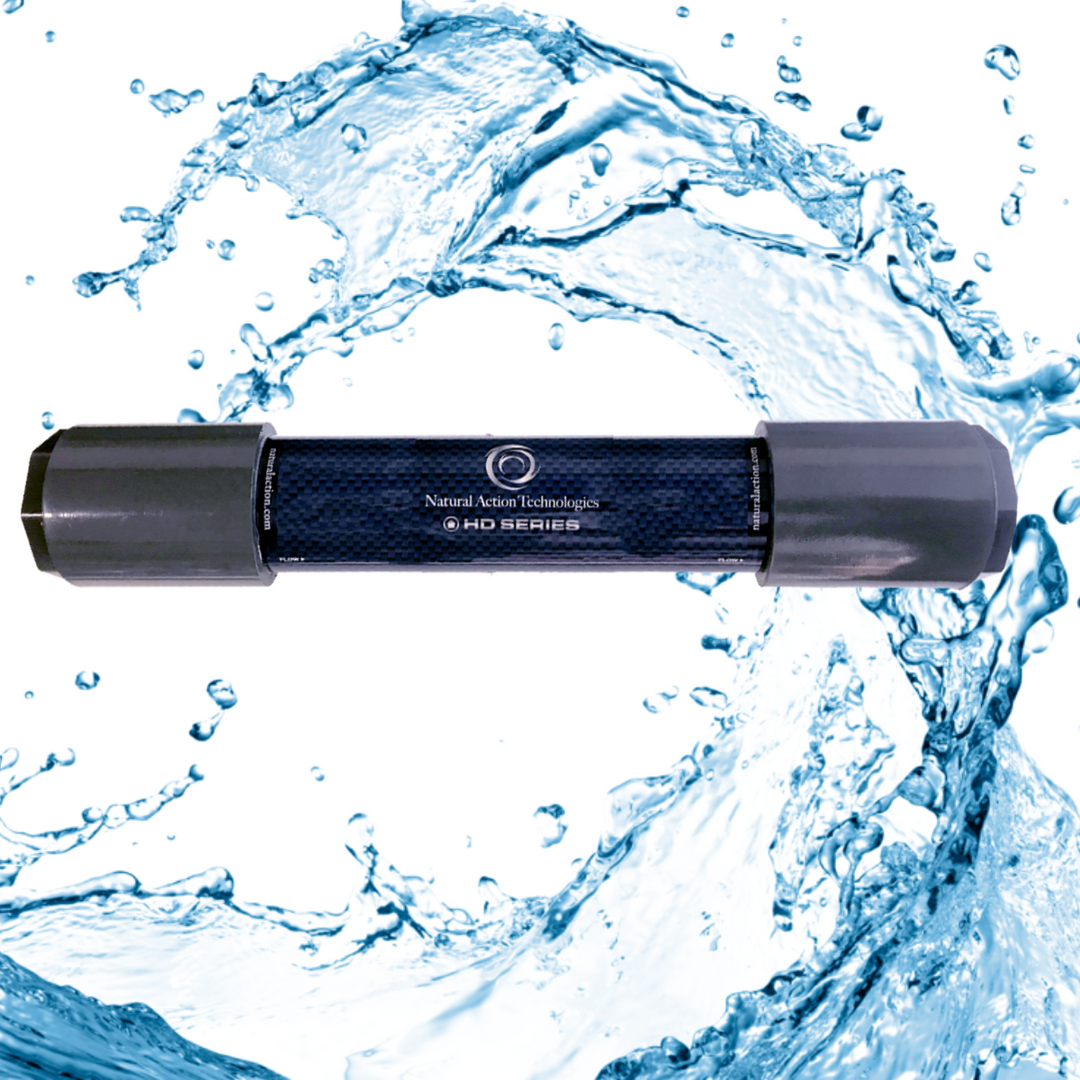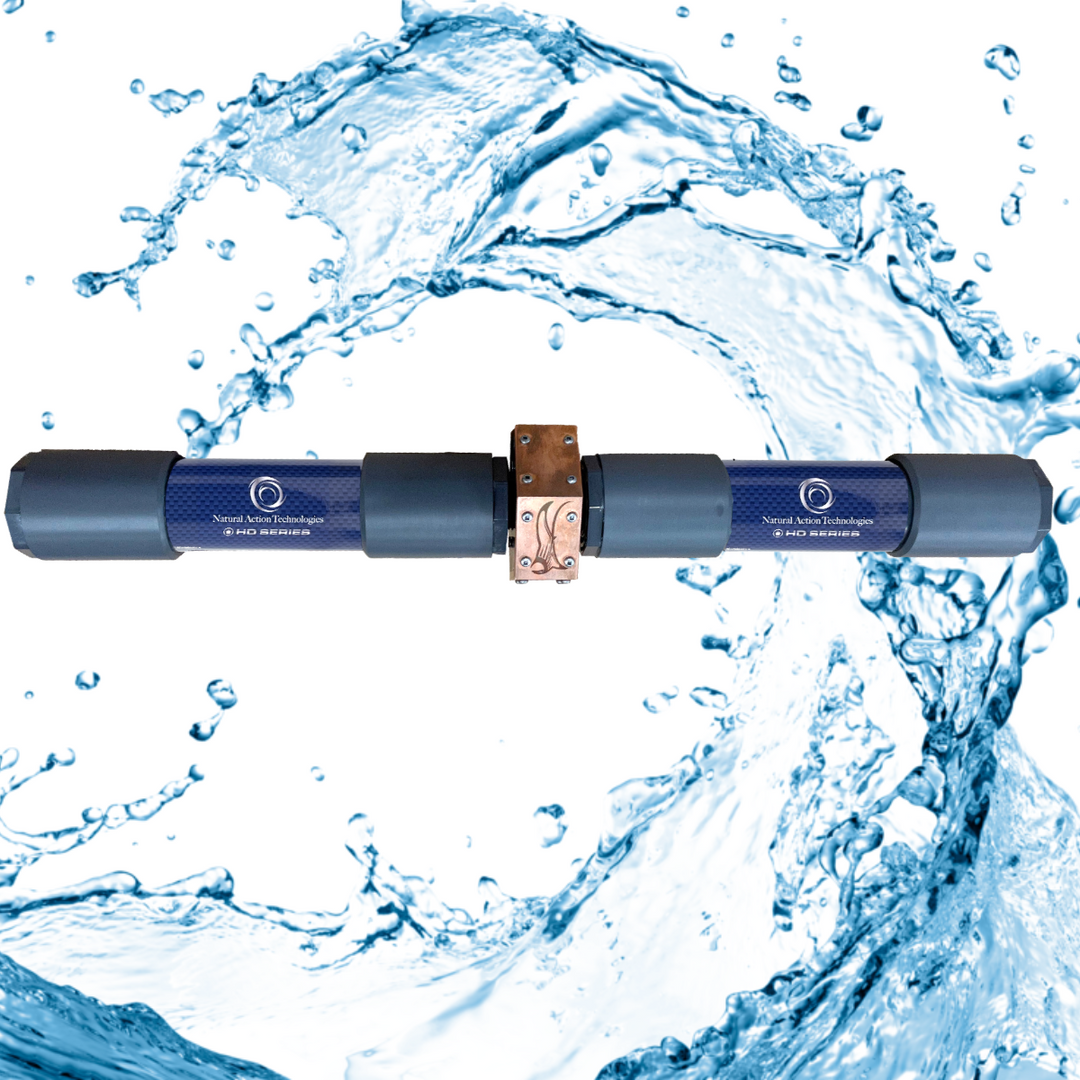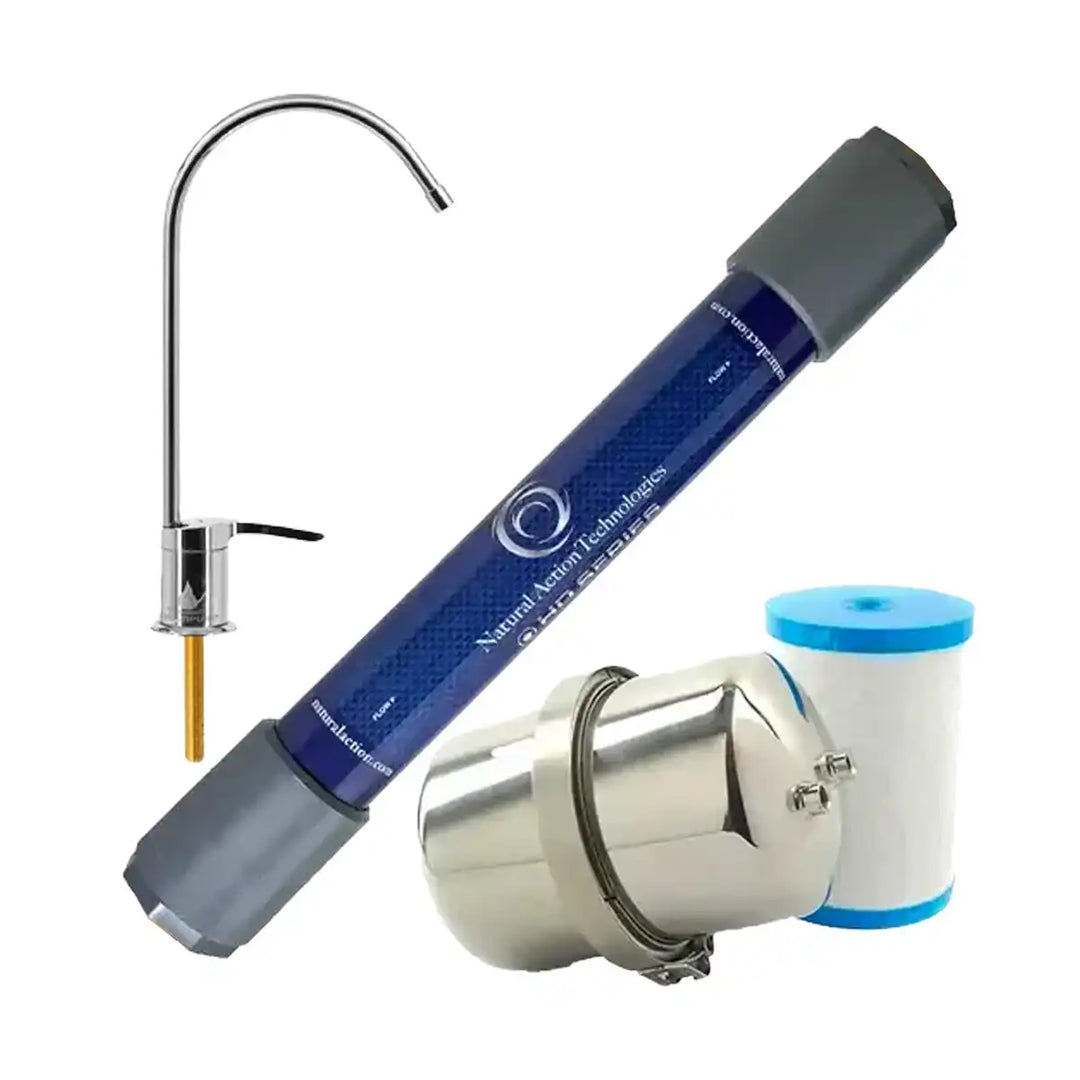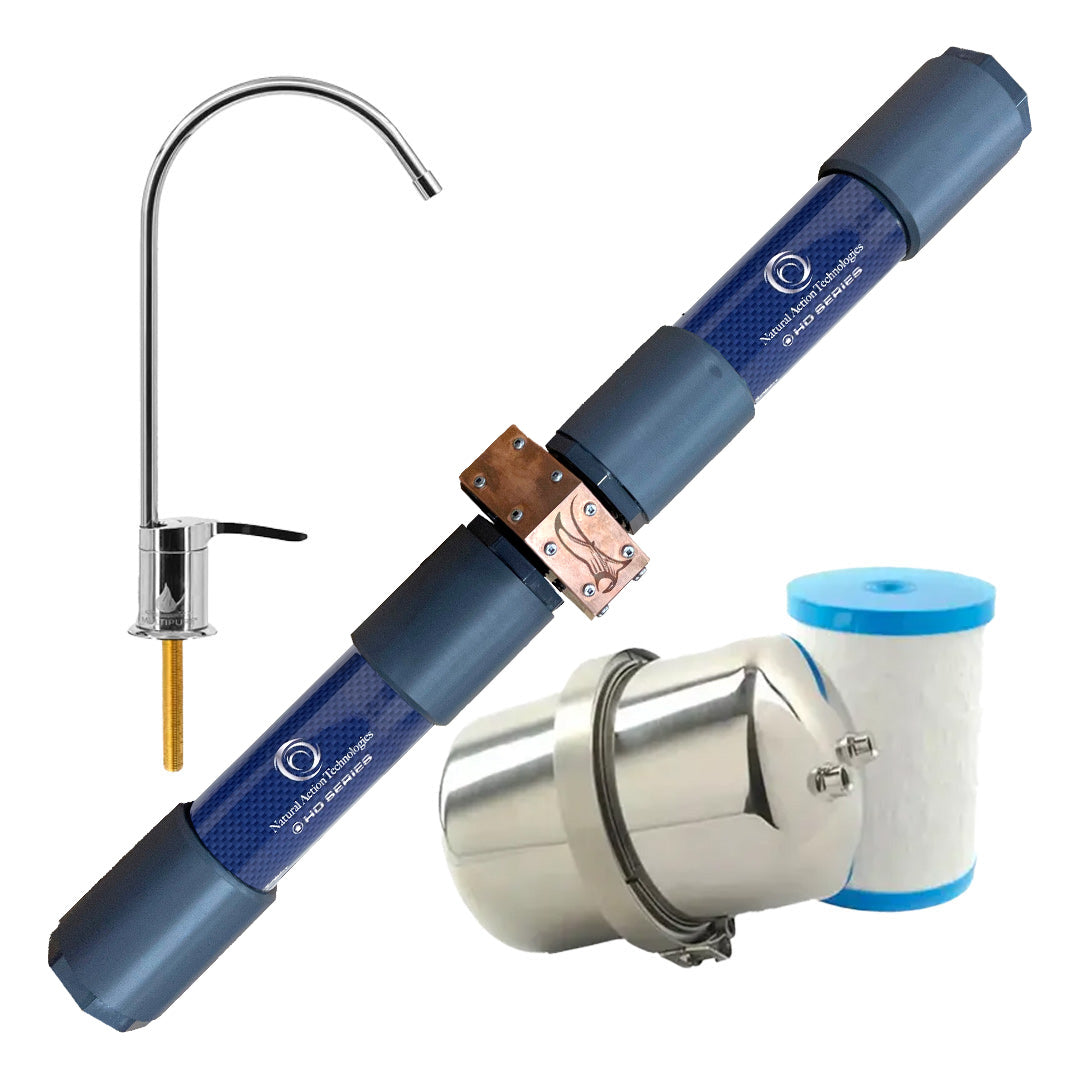By Jonathan Butts
Let me first begin by saying, there is little I can recall that gave me such pleasure as witnessing the brush discharge for the first time of this nature. Tesla described 5 unique types of electrical discharges, aptly described in his lecture published in “The Electrical World”, July 11, 1891. He went on to re-iterate one of the types in his famous lecture on Alternating Currents of High Potential and High Frequency due to its unique characteristics and peculiar behavior. For sake of not driving tangents beyond the scope of the subject here, I will mention that the brush discharge produced by water plasma would make the sixth type of discharge. The difference being that of obtaining a nature of continuous spin within the dynamic of the brush. More on that down the river.
Secondly, the joy of recalling moments of reveal and exposure to these strange and overlooked properties present are just as if they recently happened. My mind scurries like branched lightening for all the events proceeding over the next 4 years. Never failing to unveil a new stumbling block to reveal more affirmations of my suspicions. After testing for myself in the automobile and witnessing some unique phenomenon, I briefly sought an analytical approach. But the suspicion of it 'just being water' was somewhat overwhelming and my mind could hear a voice urging me to simplification. To integration. "The days of breaking things apart to figure out how they worked were coming to an end", - it said.
I didn’t have a pot to piss in, and by no means should I have even attempted to conduct such advanced experiments, trying to verify chemical and atomic properties with no fancy instruments. But I had a hunch, and our 200-year-old science had already defined everything neatly to the point where it already proved itself wrong. Of course, there could other explanations for such massive gains with little efforts in the IC engine, albeit a waste of time.
So, strapped for resources I figured I would see how cohered the oxygen and hydrogen were with each other still. I also was gifted an old analog oscilloscope because I’m kind of into vibrations, and I wanted to look at them. At any rate, first I set up a system where I could introduce things and measure the electrical components present.
Going into water reactor cell design is also another tangent, but I will mention it is of great advantage to have exposed plates in the cell for measurements and experimenting, as provided by the group selling the “HHO” generators. It was a dry cell as mentioned, which in smaller and less industrious systems is ideal, as especially in an automotive application or other application involving motion. However, those designs are not suitable when controlling the x axis electrically and are impractical due to inconsistencies and safety reasons. (Mostly due to the fact that the water plasma is a vapor capacitor with different latent potentials than the liquid it comes from, and they tend to discharge to one another) mixing them into an emulsion while maintaining the brush discharge (flazer) is somewhat dangerous. Both explosions and implosion can occur, sometimes in sequences that don’t always want to stop.
At any rate, the idea was to mix an explosive gas into the water plasma flazer while lit. It is worth mentioning that when you light the plasma gas with enough forward pressure to stop the implosion (the collapse of the electrical circuit) it forms a very thin and sharp “flame”. Which by all means is the incorrect term to be used. One can clearly see with little evidence that it is an electrical discharge. And so perhaps my perspective also changed in of observing conventional flames and oxidation process. Whether rusting or igniting, to me became a difference of only time and visibility.
In this case, about .1 PSIG was used through an .062” nozzle and produced a Flazer roughly 3” long. I spent many hours observing it in darkness. When started cold, the flazer is blue and the longer it ran the more orange and yellow it became, corresponding directly to the temperature of the cell. It undoubtedly performs more efficiently cold. In addition, well rested. More on that later. I must digress to the points of uniqueness. Consequently, blue is a higher frequency relative to yellow - orange - red. Green is kind of like the ground - hence, well never mind for now.....
The Flazer does not emit heat, until you come into contact with it, at least from the sides. However, in longitude with the Flazer direction an invisible beam of focused heat can be felt at much greater distances while allowing the hand to remain, though nothing is felt immediately. By orienting the Flazer vertically in the dark, a beam can be subtly witnessed to much greater distances than the visible portion. With larger systems the beam can be seen feet above the end of the Flazer point.
Back to the gas. Propane was introduced through various apparatus. Initially, the gas was pumped into the water plasma gas circuit. The theory was that if the oxygen was not bound to the hydrogen, that the propane would ignite and manifest as a propane flame. This of course was done with the Flazer lit. The propane flowed through the water plasma Flazer and did not ignite. The propane moved through the plasma flame and raw propane could be whiffed. I even let it run for some unreasonable period, where the lab filled with the stench of it to an unbearable degree. Mind you, this is a plasma that evaporates Tungsten at 10,000 F. Interesting.
Through a slightly different method however, I was able to get the propane to ignite through a scrubbing method, and the two gases hybridized. Later I found out the Eastern industrialists were combining conventional fuels by creating severe turbulence. In other words, they were mechanically breaking apart the water plasma. I had no idea what Brown’s Gas was at this point. It was a whole different substance hidden within the internet I had not discovered yet. A year later or so, it would be named "electrically expanded water" EEW (not very attractive) by the Brown's gas crowd. But they were still trying to break it up in my opinion. Some good data came out of Mass Spec work I couldn't afford to do, further supporting my Jeet Kun Do. Dominoes falling. Love it.
When the RWP (Resonant Water Plasma) is left whole and scrubbed with the propane (or any other fuel) a highly amplified flame arrives. When reversing the process and igniting the propane first, (about the size of a cigarette lighter), and then introducing the water plasma, the flame slowly swells at an accelerating rate. Combined, the 3” inch Flazer and lighter sized flame combine to make an intense 16” burner of considerable stature. It puts out heat very intensely, unlike the characteristic of the water plasma when ignited. I wasn’t really interested in these means, but it was an interesting experiment.
It is appropriate to mention Tesla’s comment on brush discharge types in this particular facet. “With much higher frequencies obtainable by the disruptive discharge of a condenser, were it not for the sudden impulses, which are comparatively few in number, sparking would not occur at very small distances” …... “electrical characteristics of the brush discharge would completely vanish – no spark would pass; no shock would be felt – yet we would still have to deal an electric phenomenon…”
“What adds to their interest (brush discharge types) is that they may be produced with one single terminal as well with two; in fact, often better with one than two.”
One of the great advantages of the exposed electrode plate design, is that measurements can be taken at any point in the series configuration. Since this was a twelve-volt system, and a parallel cell to ground (six plate electrodes) @ 2 volts per cell.
Taking one lead of a voltmeter and shorting across the plates does nothing immediately to the output of the discharge of the lit plasma, nor effects the volume of plasma vapor generated. However, if one were to almost short the single lead a brush like arc starts as Tesla describes in detail, and once the arc is struck the lead may be moved away to a distance of a few millimeters which would represent 10,000 volts or so. Or at any rate, much more voltage than can be measured across the plates, which is 2 volts maximum, and the whole system being powered by only twelve volts. It is here important to note that a volt meter has a 50 Mega Ohm resistor and the other lead is connected to a capacitor – the air. (So this is a capacitor to capacitor circuit through extremely high resistance; very important to remember) The effect is more amplified and supports the momentum of the arc better than just any piece of conductor shorted across the cell. Oh, remember how the jeep ran better with the plasma with a plugged cat? Yeah, spin systems need resistance. Just like your bath tub has a big tank and a small hole to make a vortex at a certain height of water. Very early on I knew water was teaching me the mysteries of all the questions I had about electricity that no one could answer. I knew the equations. They made sense to a point. Until they didn’t. I often wonder why Tesla never mentioned this (spin) about electrical circuits – or did he?
We have some evidence now to begin to look at water, contained by separated conductors, is behaving like a variable coupled primary and secondary induction coil, where the secondary is open at the end; the end being where you would see one of the five discharge types; or should I say six? We may also reasonably speculate that the liquid water and the gas (vapor) are both taking on these properties. The vapor, however, can be viewed as the secondary (high voltage). We can also remind ourselves that the high voltage is produced when the primary circuit is opened, and the magnetic field and electric field collapse together. Who would have thought things amplify energy when they come together? That organizing intention in the right direction might be the ticket. How novel.
It is important to note the simple principles being developed. High resistance and a high degree of asymmetry. We don’t want to fracture the water apart; we want to gently pull it apart as fast as possible and as far as possible without breaking the bond. Then let it wind back together again. The winding back together is what achieves the “over unity” which is easily explainable when atomic spin, and atom orbital pairs such as hydrogen, and lost or accountable energy is stored as spin are allowed in the conventional equations. (I recommend "Double Helix" by Gann and Lo for a great explaino here; where they discuss the fifth phase of water. (Gerald grabbed the fourth, then I read about these guys in 2017), so I figured I'd pull in last with six. I'm pretty sure I confused everyone last year when I gave a 30 minute drag race lecture called the six phase (allotropes) of water. It was fun. (Apparently we are marketing by inverse density, albeit in truth. My favorite number and a huge Mark Martin fan.) So be it. I'll take it. The earth likes it too, at 6.66 HZ, but that's a little devilish.
We may begin to reconstruct our science in a simple manner for more efficiency if we allow for these factors. With a few other natural observations of common sense, anything may be designed to a much greater degree of efficiency than is currently modeled.
To a high degree of certainty, the mysteries of great subtle forces can be uncovered to the laymen when water in nature is fully observed in all its asymmetry and dealings with resistance. Water flows better with obstruction, once the water is done shaping whatever obstructs its natural course. What if the shape is already natural? What about the shape of a wave, or vibration?
But water doesn’t care about time. Then time must be removed from all principle Unified modeling. Now we can move. Any Unified Model that uses time is bunk. Nothing against Einstein, but it is time to move on. 'What is' - has no time. What Isis? The woman goddess and terrorists and the Earth the devil number. And water is just a chemical. That's what it is. What a program. There must be something in the water.
What planet are we on?
Yeah, ok, it's just water. But what is it? How does it move?
Make sure to Read Chapter 1 and 3




